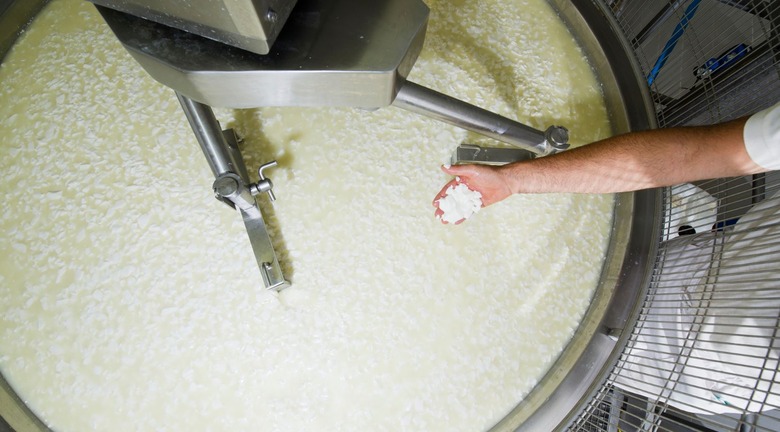The Truth About Listeria & Raw Milk Cheese
Recently, a certain artisan cheese made headlines when it caused the deaths of two people and sickened several more due to contamination from listeria bacteria. This is a tragic incident – for those who lost loved ones in such a sudden and unexpected way, of course, but for the creamery as well. Much was made of the tainted cheese being made from raw (unpasteurized) milk. However, this story is far more complicated than many of the news articles led readers to believe.
All small-batch cheesemakers want to make delicious, wholesome, and hygienic cheese. In this recent case, the cheesemaker was the sole owner of his small creamery; his name is even on the cheese labels. The artisan cheese community knew and loved his cheeses, and his intention was never to sell contaminated cheese. I'm sure he's heartbroken and devastated by these events.
The scary thing about listeria: it's a naturally occurring pathogen that can be found everywhere. It's often found in drains and in moist environments, and as such, contamination can be caused at so many stages of the cheesemaking process. The bacteria can be picked up by the milk source itself, or while cheese is being hand-made, or during the aging process, or even in the post-production handling. It can flourish in cheese aging rooms, which are cool and damp; it can grow in cutting rooms on cheese processing equipment. Because of its ubiquity, cheesemakers are extremely diligent to keep it at bay. They're constantly cleaning their facilities; there's a huge cleaning sweep done at the start of each work day, then multiple times as the day progresses (in between each batch), and then once again at the end of the day.
But try as they might, cheesemakers aren't able to eradicate this bacteria 100% of the time. And while listeriosis is uncommon, it's extremely dangerous: one in five people who contract it will die. Because of this, it's important to note that this contaminate affects different demographic differently. There are four groups of people who are at the highest risk for listeriosis: the very young, the elderly, pregnant woman and those with compromised immune systems. If you fall into one of these groups, do not eat high-listeria-risk foods such as raw sprouts, smoked seafood, soft cheeses, raw milk, or cold deli meats.
Now, to the point: yes, it's quite true that the listeria risk from raw-milk cheese is significantly higher than with pasteurized-milk cheeses. It's bound to be; pasteurization, by definition, is the process of heating a food item to kill pathogenic bacteria to make the food safer to eat. However, pasteurized cheese does carry some risk as well (note the February recall of Sargento cheeses due to listeria contamination).
That said: I'm saddened that, when people get sick from eating raw milk cheese, the "raw milk factor" is always highlighted in an utterly damning way. Raw milk cheeses have been eaten and enjoyed for hundreds of years. They have been proven to be safe for human consumption. I was recently in Europe for a few weeks on business, and made it a point to only eat raw milk cheeses that are not allowed into the US! European laws are far more lax than ours when it comes to raw milk cheese, yet the number of listeria cases in Europe is no higher than in the US (relative to population size).
At the end of the day, there are fantastic raw milk cheeses and there are fantastic pasteurized milk cheeses. If you choose to eat only pasteurized cheese, you'll still have many options, especially with the massive wave of experimentation in the artisan cheese world. However, don't be afraid of raw milk! If you are a healthy adult, it is perfectly reasonable – and delicious – to enjoy.
You can follow Raymond's cheese adventures on Facebook, Twitter, and his website. Additional reporting by Madeleine James.
